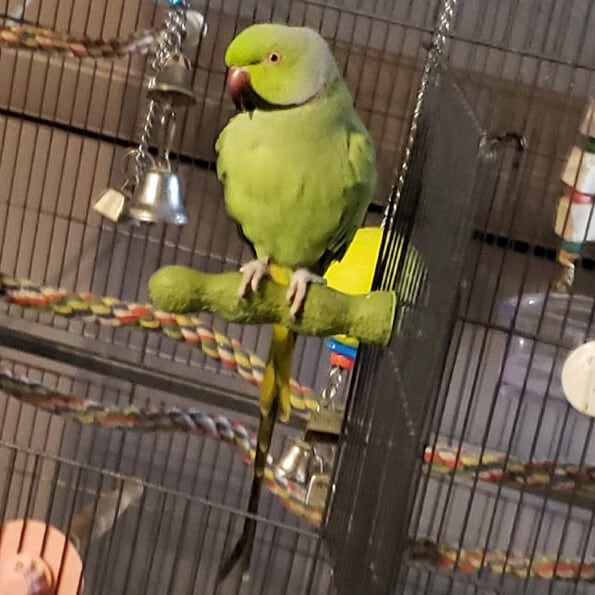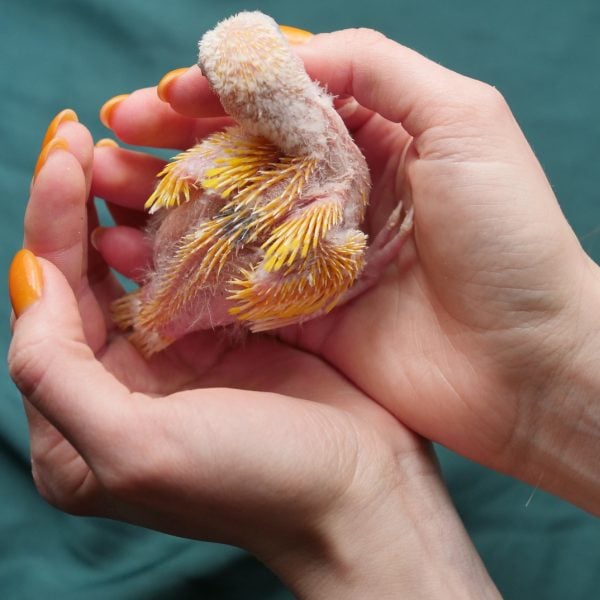Last Updated on by Catherine Tobsing
Despite sharing some fearful behaviors, a shy bird stands distinct from a fearful bird.
When you focus, you can observe a shy pet bird’s perception of family life.
Is the bird observing whatever you do?
Does it seem happy while you navigate their space?
Possibly, it hasn’t engaged with human interaction but remains curious about the potential you bring.
As you approach the cage of a timid bird, the creature may instinctively retreat to the furthest corner.
However, its curious eyes remain fixated on you, keenly observing for any indication that your presence may not be as intimidating as initially assumed.
When a tempting treat is offered to the timid bird (think millet), it cautiously accepts it, gradually overcoming its hesitations. This particular avian companion proves to be an excellent candidate for interaction, as it harbors a sincere desire to integrate into your flock, albeit cautiously navigating its unfamiliar environment.
Begin the process of familiarizing yourself with this bird by getting him/her acquainted with your presence through a process known as conditioning.
Prioritize their comfort in the birdcage before imposing any expectations upon him.
Only when he exhibits complete ease as you approach the birdcage to provide sustenance, cautiously bring your hand closer to the bird momentarily during cage maintenance, refraining from actual contact.
Engage in gentle conversation with him, keeping in mind to steer clear of direct eye contact.
Try (if possible) installing a grooming perch on the inside of the birdcage door.

This helps the bird with a “compromise” allowing it to be on the cage while out of the cage no longer needing to protect its “territory.”
Don’t apply pressure on the bird.
The objective here is to familiarize the bird with the presence of your hand.
Establish a sense of calm by approaching the bird cautiously as it becomes accustomed to your presence.
Gradually make contact with its head, tenderly and momentarily, before gradually retracting your hand.
The aim is for the bird to perceive your touch as innocuous and even enjoyable. Repeat this process persistently until the bird feels at ease with being touched.
It’s important to note that stroking a bird below the neck can trigger sexual or hormonal behavior.
As your feathered friend grows accustomed to gentle interactions, explore the possibility of enticing the bird onto your finger or, at the very least, getting permission to tenderly stroke its head.
The actions you take moving forward depend greatly on the advancements you’ve achieved and the specific species of bird you own.
Interacting with a budgie versus an Amazon parrot leads to contrasting encounters.
While a budgie is prone to quickly retreat from your presence, an Amazon parrot tends to react aggressively by biting.
Nonetheless, if approached with utmost caution and without displaying any signs of fear, it is possible to gradually cultivate a friendly bond with these feathered creatures.
Written by Mitch Rezman
Approved by Catherine Tobsing
Author Profile
Latest entries
 The Traveling BirdJune 26, 2025Can You Name 5 Parrot Species That Are Living Wild in the USA?
The Traveling BirdJune 26, 2025Can You Name 5 Parrot Species That Are Living Wild in the USA? Bird BehaviorJune 26, 2025How is it Parrots Are Problem Solvers Social Animals and Even Use Tools?
Bird BehaviorJune 26, 2025How is it Parrots Are Problem Solvers Social Animals and Even Use Tools? Bird & Parrot AnatomyJune 25, 2025How a Tiny Chemical Modification Makes Parrots Nature’s Living Paintings
Bird & Parrot AnatomyJune 25, 2025How a Tiny Chemical Modification Makes Parrots Nature’s Living Paintings PigeonsJune 20, 2025How Do Parrots Thrive in Cities Outside Their Native Habitats?
PigeonsJune 20, 2025How Do Parrots Thrive in Cities Outside Their Native Habitats?




